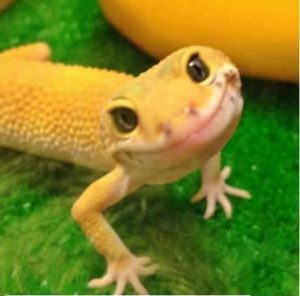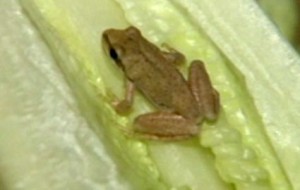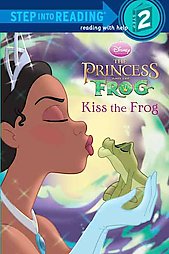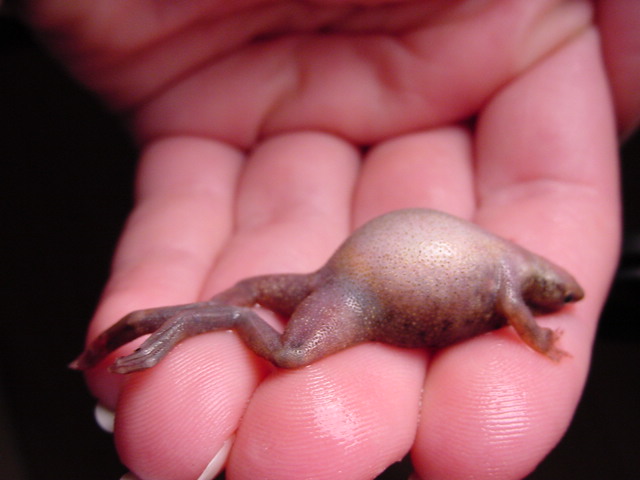Darwin is in northern Australia.
It’s close to the equator.
ABC News reports Top End parents are being urged to vacuum up tiny brown and white droppings of gecko poo amid an above-average rise in salmonella cases affecting young children.
Darwin annually records above national average rates of salmonella, especially among children under five during the humid months around Christmas.
This wet season is no different, however the past month has seen an unexpected rise in cases.
“We’re getting about 50 per cent more than we’d expect at the moment,” Dr Peter Markey, head of disease surveillance at the NT Centre for Disease Control, said.
There are many different strands of salmonella, with the disease’s spread generally linked to contaminated food, warm conditions, polluted water, unclean surfaces and the spread of faecal matter.
Symptoms include fever, diarrhoea, vomiting and dehydration, with children and the elderly especially badly affected.
Dr Markey said Top End-specific research conducted by the centre in recent years had identified many well-known risk factors.
“We’ve isolated salmonella from geckos, lizards, snakes. Dogs and cats and turtles are important carriers too. Goldfish even, because aquarium water can be contaminated.”
Dr Markey said young children handling pets and then not washing their hands would often lead to them getting sick, however some might be getting sick from actually eating tiny animal faeces.
Gecko poo is generally elongated and brown, sometimes with a tip of white, and is often mistaken for mouse or rat droppings.
“Toddlers of course live on the ground and crawl around and put anything in their mouths,” Dr Markey said.
“We showed that regular vacuuming can help.
“It’s important to get that gecko poo or the frog poo off the ground or balcony.”








 “Your non-apology for your role is (sic) amplifying the ‘far-fetched, but sorta fun’ story makes me wonder how serious you are about your posts and your role in our public health community.”
“Your non-apology for your role is (sic) amplifying the ‘far-fetched, but sorta fun’ story makes me wonder how serious you are about your posts and your role in our public health community.” identified 135 cases in 25 states and the District of Columbia; 45% were in children aged ≤5 years. Among 70 patients with primary infection, 37% reported turtle exposure, of which 81% was to small turtles most commonly purchased from street vendors. A matched case-control study showed a significant association between illness and exposure to turtles (matched odds ratio [mOR] = 16.5). Increasing enforcement of existing local, state, and federal regulations against the sale of small turtles, increasing penalties for illegal sales, and enacting more state and local laws regulating the sale of small turtles (e.g., requiring Salmonella awareness education at the point-of-sale), could augment federal prevention efforts. …
identified 135 cases in 25 states and the District of Columbia; 45% were in children aged ≤5 years. Among 70 patients with primary infection, 37% reported turtle exposure, of which 81% was to small turtles most commonly purchased from street vendors. A matched case-control study showed a significant association between illness and exposure to turtles (matched odds ratio [mOR] = 16.5). Increasing enforcement of existing local, state, and federal regulations against the sale of small turtles, increasing penalties for illegal sales, and enacting more state and local laws regulating the sale of small turtles (e.g., requiring Salmonella awareness education at the point-of-sale), could augment federal prevention efforts. … But when she opened a bag of Pictsweet frozen cut green beans last month, she found more than just green beans.
But when she opened a bag of Pictsweet frozen cut green beans last month, she found more than just green beans. Doctors blamed the cases in 25 US states on youngsters kissing frogs after seeing the film. Most were under 10, with half being girls.
Doctors blamed the cases in 25 US states on youngsters kissing frogs after seeing the film. Most were under 10, with half being girls. During April–July 2009, the Utah Department of Health identified five cases of Salmonella Typhimurium infection with indistinguishable pulsed-field gel electrophoresis (PFGE) patterns, predominantly among children. In August, CDC began a multistate outbreak investigation to determine the source of the infections. This report summarizes the results of this ongoing investigation, which, as of December 30, had identified 85 S. Typhimurium human isolates with the outbreak strain from 31 states. In a multistate case-control study, exposure to frogs was found to be significantly associated with illness (63% of cases versus 3% of controls; matched odds ratio [mOR] = 24.4). Among 14 case-patients who knew the type of frog, all had exposure to an exclusively aquatic frog species, the African dwarf frog. Environmental samples from aquariums containing aquatic frogs in four homes of case-patients yielded S. Typhimurium isolates matching the outbreak strain. Preliminary traceback information has indicated these frogs likely came from the same breeder in California.
During April–July 2009, the Utah Department of Health identified five cases of Salmonella Typhimurium infection with indistinguishable pulsed-field gel electrophoresis (PFGE) patterns, predominantly among children. In August, CDC began a multistate outbreak investigation to determine the source of the infections. This report summarizes the results of this ongoing investigation, which, as of December 30, had identified 85 S. Typhimurium human isolates with the outbreak strain from 31 states. In a multistate case-control study, exposure to frogs was found to be significantly associated with illness (63% of cases versus 3% of controls; matched odds ratio [mOR] = 24.4). Among 14 case-patients who knew the type of frog, all had exposure to an exclusively aquatic frog species, the African dwarf frog. Environmental samples from aquariums containing aquatic frogs in four homes of case-patients yielded S. Typhimurium isolates matching the outbreak strain. Preliminary traceback information has indicated these frogs likely came from the same breeder in California.  container filled with a clear solution, which looked like water. The container had tape across it saying, "Water + Bleach – leave soaking overnight, dead turtle."
container filled with a clear solution, which looked like water. The container had tape across it saying, "Water + Bleach – leave soaking overnight, dead turtle."